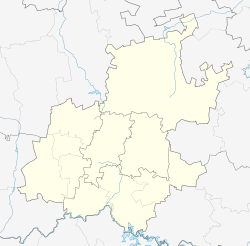| Tlokwe Ruins | |
|---|---|
| Nearest city | Fochville |
| Coordinates | 26°29′S27°29′E / 26.483°S 27.483°E |
The Tlokwe Ruins are the remains of Sotho-Tswana settlements on the hills surrounding Fochville in Gauteng, South Africa. They were inhabited until the inhabitants were driven away by Mzilikazi in the 1820s. [1]
The Sotho-Tswana people lived in this area for roughly 300 years before the 1815-1840 Difaqane and the 1815-1816 volcanic winter. They farmed sorghum, maize and cattle in the fertile valleys and had a thriving community. During the Difaqane they accepted refugees from the south and eventually, caving in to both population and environmental pressures, moved toward the Brits area. [2] [3]
